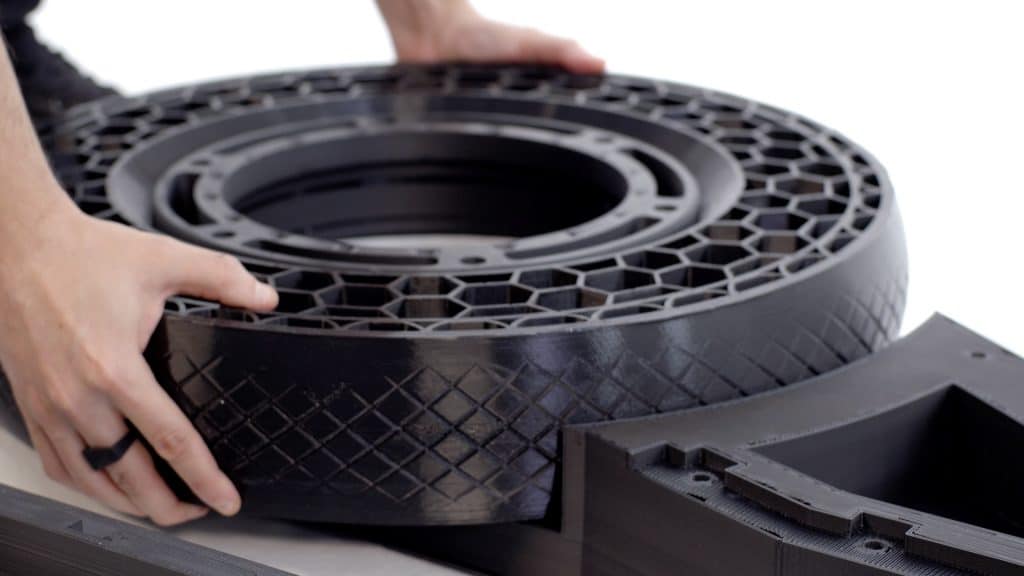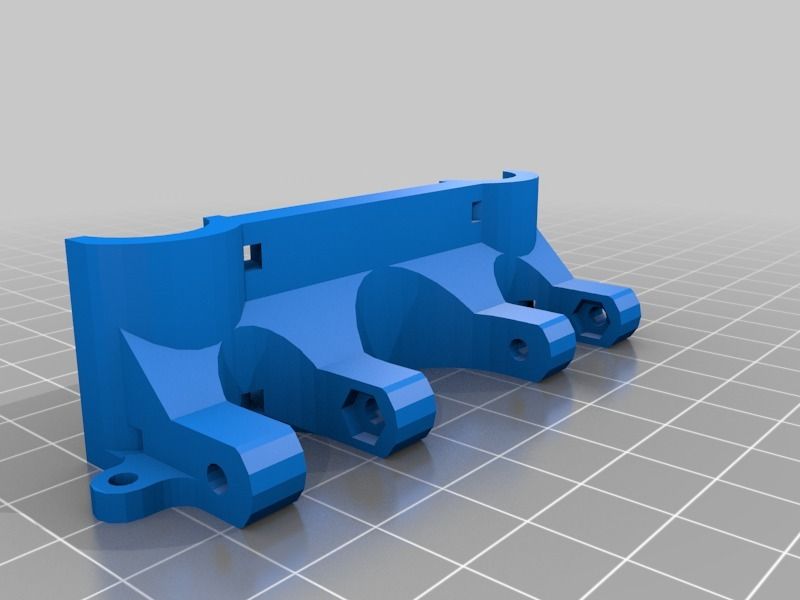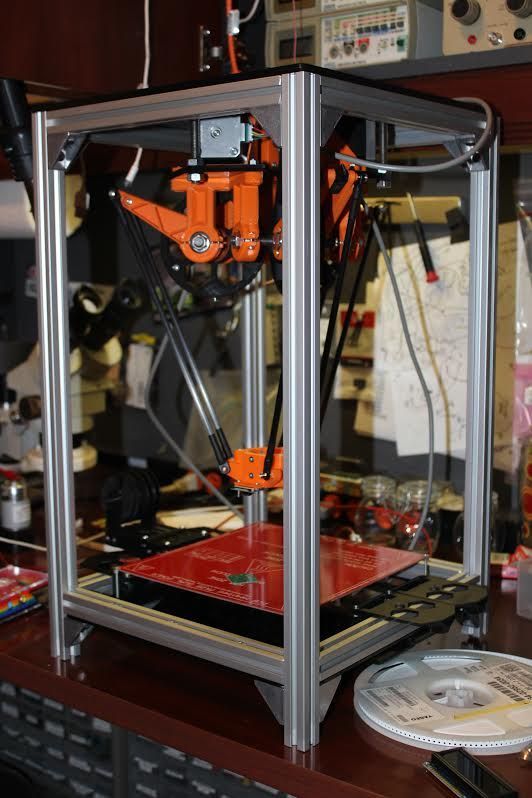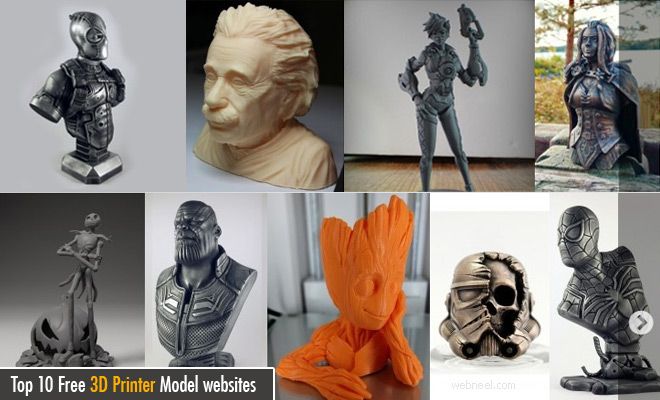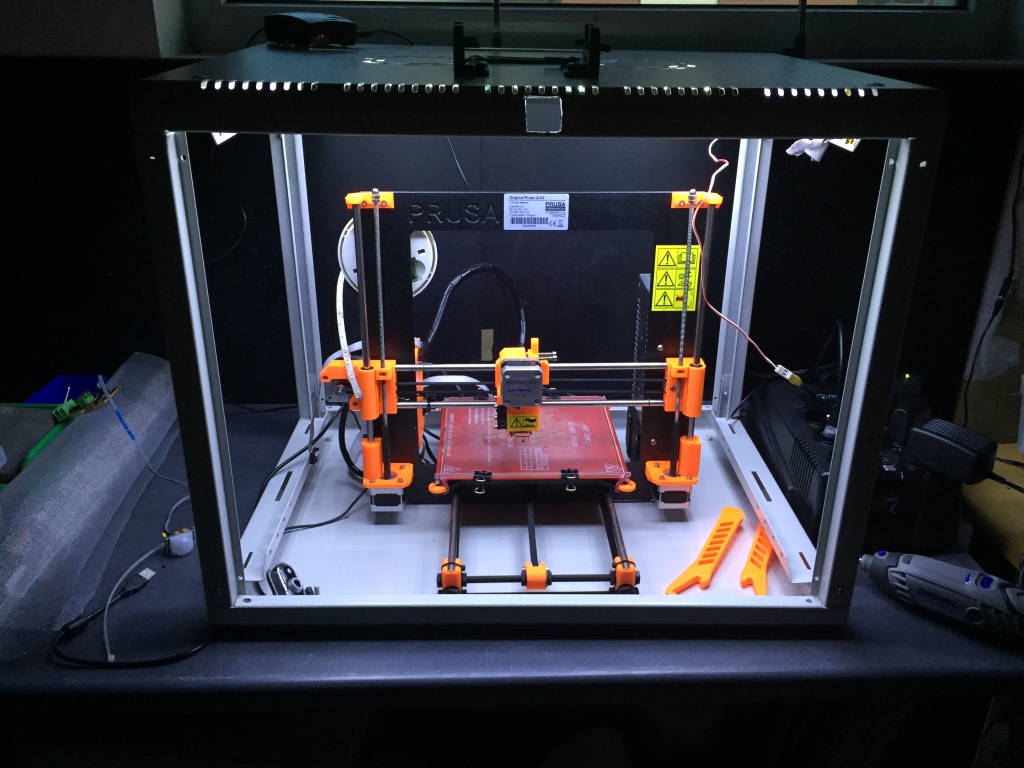3D printed tires michelin
Michelin’s Uptis airless tire takes to the road with 3D printing
0Shares
The 2021 3D Printing Industry Awards shortlists are open for voting, have your say now.
French tire manufacturer Michelin has reached a new milestone in the development of its airless Uptis (Unique Puncture-proof Tire System) tire, having carried out successful road tests.
As part of Michelin’s VISION concept, if Uptis goes to market in 2024 as planned, drivers would be able to 3D print the tread and adapt the tires according to their driving, seasonal weather conditions, and to self-maintain the general health of the tire.
3D printing has already been used to create the prototype of the tire, however further details on the additive manufacturing technologies involved and the extent to which they will be used in the future, remain to be seen.
Michelin’s Uptis tire is airless to eliminate the risk of punctures. Photo via Michelin.An airless, biodegradable concept
Michelin first proposed the Uptis concept tire at its International Mobility Summit, Movin’On, in 2017. The tire was designed to be airless in order to eliminate punctures while being biodegradable and equipped with sensors for real-time monitoring.
The tire’s airless interior design is based on an alveolar structure such as that found in lungs, which feature intricate internal geometries suited to 3D printing. To create the prototype for the show, Michelin worked with automotive manufacturer General Motors to 3D print the concept tire.
Ultimately, Michelin is seeking to reduce the number of tires thrown away due to punctures, which, according to an in-house “scrapyard survey”, amounts to some two million tons, or 200 times the weight of the Eiffel Tower. The firm believes its Uptis tire could avoid this waste altogether thanks to its airless nature and “rechargeable” potential.
The tire’s “rechargeable” concept is the most interesting element of the design from an additive manufacturing perspective, and could see drivers reprint their tire treads by the roadside.
The Uptis tire is scheduled to come to the market in 2024.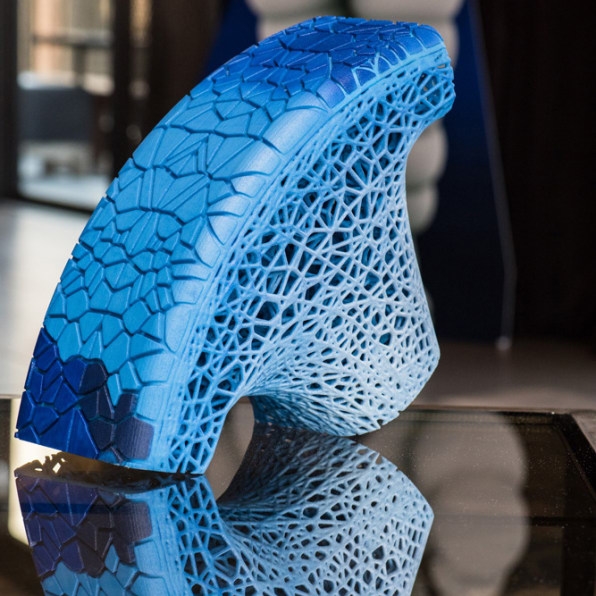 Photo via Michelin.
Photo via Michelin.Uptis’ rechargeable tread
Through its VISION concept, Michelin is aiming to make mobility safer, cleaner, more efficient, and universally accessible. The concept demonstrates how the company’s sustainable development model hopes to transform tire manufacturing between now and 2050, the date by which the EU aims to be climate-neutral.
The four pillars of VISION are Airless, Rechargeable, Connected, and 100 percent Sustainable. To meet its Airless goal, Michelin is developing technology that eliminates the risk of flats and rapid pressure loss to improve safety and comfort, while reducing the environmental impact of tire wastage.
The Connected element of VISION sees the Uptis equipped with numerous sensors to usher in a “new era” of service, comfort, and safety for motorists, while its Sustainable pillar sees Uptis manufactured by biosourced and recycled materials in order to ensure the environmental footprint of the tire’s lifecycle is minimal.
Finally, and hailed by Michelin as one of the “most revolutionary” aspects of its VISION concept, is the Rechargeable commitment. According to the company, having a tire with a 3D printed tread makes it possible to deposit just the right amount of rubber compound, therefore reducing the use of raw materials.
The tire can subsequently be “recharged” using a 3D printer that reprints the tire tread according to the needs of motorists. For instance, drivers might want to adapt their tires to winter or summer conditions, or simply upkeep the general health of their tires as a result of wear and tear.
With 3D printing, Michelin says these adjustments could be made quickly and easily via an on-demand service that could see drivers 3D print new treads for their tires by the roadside. While further details are still to come regarding which 3D printing technologies would be used, and in what capacity, it seems 3D printed roadside repairs could become reality when the tire comes to the market in 2024.
Michelin already uses metal 3D printing to design and create multiple products, including the components of tire molds. Going forwards, the company will leverage this expertise further to explore rubber 3D printing to offer its recharging concept for tire treads.
The tire’s tread could be “recharged” using 3D printing. Photo via Michelin.Test driving the Uptis
The latest development in Michelin’s VISION has seen the Uptis transfer from concept to the road. Automotive YouTubers Mr. JWW and Gercollector were brought in to test the prototype Uptis in real-life conditions on public roads.
Both offered substantial praise for the tire, said Cyrille Roget, Michelin Group Technical and Scientific Communications Director: “Our greatest satisfaction came at the end of the demonstration when our passengers said they felt no difference compared with conventional tires.”
Subscribe to the 3D Printing Industry newsletter for the latest news in additive manufacturing. You can also stay connected by following us on Twitter and liking us on Facebook.
Looking for a career in additive manufacturing? Visit 3D Printing Jobs for a selection of roles in the industry.
Subscribe to our YouTube channel for the latest 3D printing video shorts, reviews and webinar replays.
Featured image shows Michelin’s Uptis tire is airless to eliminate the risk of punctures. Photo via Michelin.
Tags Cyrille Roget General Motors Gercollector Michelin Michelin Uptis Michelin VISION Movin'On Mr JWW
Hayley Everett
Hayley is a Technology Journalist for 3DPI and has a background in B2B publications spanning manufacturing, tools and cycling..jpg) Writing news and features, she holds a keen interest in emerging technologies which are impacting the world we live in.
Writing news and features, she holds a keen interest in emerging technologies which are impacting the world we live in.
Michelin's Uptis Airless Tire is Officially on the Road!
Published on October 11, 2021 by Madeleine P.
In June 2019, we reported on an interesting new tire that came from famous French manufacturer Michelin. Designed to be airless, the concept of the tire is that it could avoid any risk of puncture and be repaired if needed thanks to a 3D printed rubber tread. Called Uptis (Unique Puncture-proof Tire System), the tire was first presented at the Munich Motor Show last September. Mounted on an electric MINI, the Uptis tires caused a sensation, allowing Michelin to confirm its ambitions: the French company wants to go to market in 2024. Though itt remains to be seen whether 3D printing will still be part of this project, the program has taken a step forward as Michelin has started to put it in road tests. Done on public roads by two automotive youtubers, Michelin reported that the tires felt just like any others, despite their unique beginnings.
The Uptis tire is part of Michelin’s Vision Concept, which was created with the aim of imagining the tires of the future. Ultimately, the company wants to reduce the environmental impact of these products and offer a greener alternative. Through an internal study, the company realized that more than 20% of tires are thrown away because they are flat or damaged, resulting in a lot of waste that is difficult to process. By creating an airless tire, Michelin is diverting this problem and should, in principle, extend the life of these tires. Which brings us to what interests us the most in particular in this solution. In the original concept, users would be able to 3D print the tread, allowing them to adapt the tires according to their driving, the weather conditions as well as also the general health of the tire, though this has not been confirmed since.
The Uptis tire has been designed to be puncture-proof (photo credits: Michelin)
Not much is known about which possible 3D printing technology would be needed or how long it would take to make the 3D printed tread.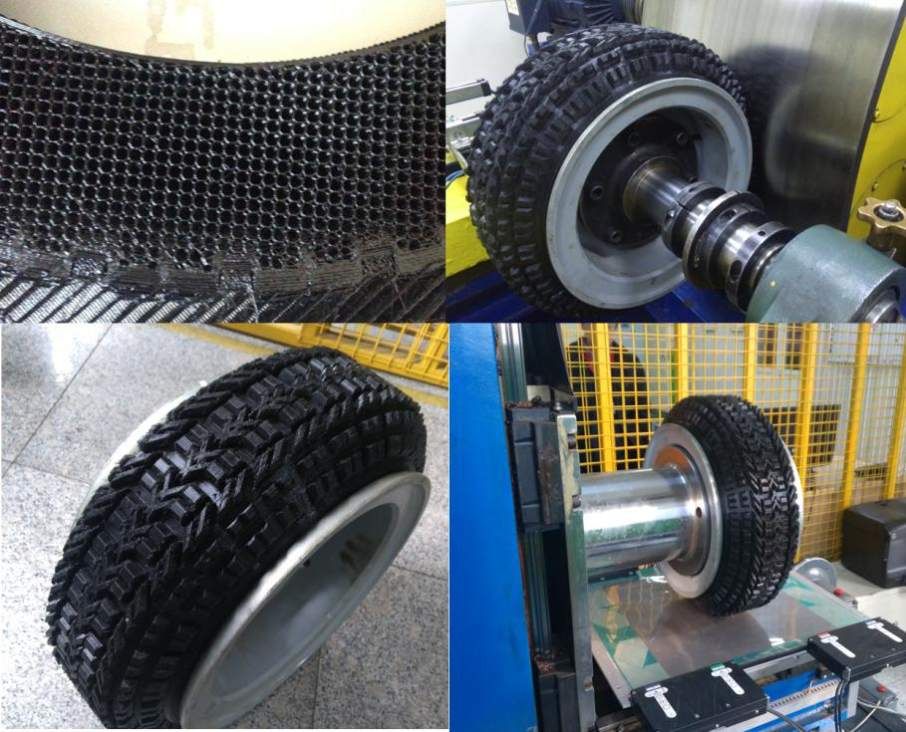 And there are many questions remaining. For example, would the driver have to go to a licensed garage to print this tire? Or would they be able to do it themselves? How much will this custom-made tire cost? However, one thing that we do know what would be the preferred material to make the tread: a flexible structure reinforced with fiberglass and rubber that is placed on an aluminum wheel. Michelin claims that Uptis will last three times longer than conventional tires.
And there are many questions remaining. For example, would the driver have to go to a licensed garage to print this tire? Or would they be able to do it themselves? How much will this custom-made tire cost? However, one thing that we do know what would be the preferred material to make the tread: a flexible structure reinforced with fiberglass and rubber that is placed on an aluminum wheel. Michelin claims that Uptis will last three times longer than conventional tires.
After the road test by automotive youtubers Mr. JWW and Gercollecter, Cyrille Roget, Michelin’s Director of Technical and Scientific Communications, concluded: “Our greatest satisfaction came at the end of the demonstration when our passengers said they felt no difference compared with conventional tires.” Michelin is expected to bring its new tires to passenger vehicles by 2024 through a partnership with General Motors.
And it does not end there.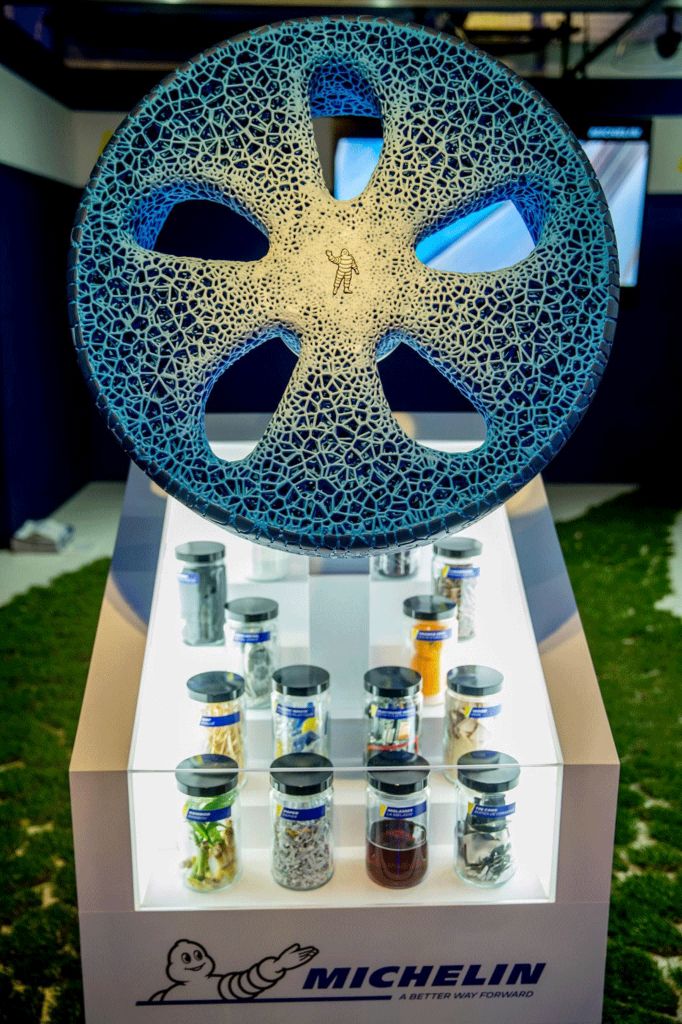 By 2050, the brand that originated the infamous Michelin Man hopes to produce tires that were made with 100% sustainable materials. An ambitious challenge that could have a definite impact on the environment. We will keep you informed of the latest news on this project, especially where it concerns additive manufacturing. You can find more information HERE.
By 2050, the brand that originated the infamous Michelin Man hopes to produce tires that were made with 100% sustainable materials. An ambitious challenge that could have a definite impact on the environment. We will keep you informed of the latest news on this project, especially where it concerns additive manufacturing. You can find more information HERE.
What do you think of Michelin’s Uptis 3D-printed, airless tire? Let us know in a comment below or on our Facebook and Twitter pages. Don’t forget to sign up for our free weekly newsletter, with all the latest news in 3D printing delivered straight to your inbox!
Uptis - 3D printed airless and puncture resistant tire
Uptis - 3D printed airless and puncture resistant tire
Uptis (French for Unique Puncture Resistant Puncture System) and is a pre-assembled unit designed with no air to avoid all punctures. The company worked with the American manufacturer General Motors, which is already a user of 3D printed to present a 3D printed prototype at the Movin'On Summit on Sustainable Mobility in Montreal.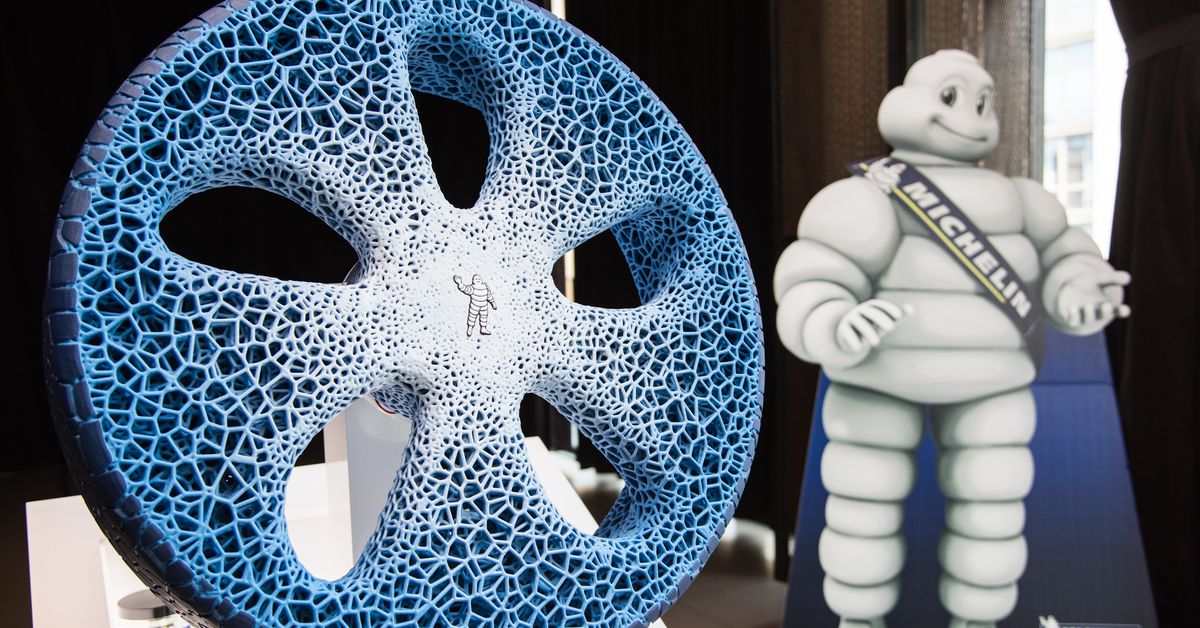 With this puncture-resistant tire, they hope to reduce the number of discarded tires due to punctures and provide better safety for motorists.
With this puncture-resistant tire, they hope to reduce the number of discarded tires due to punctures and provide better safety for motorists.
In 2017, Michelin introduced a new Vision tire concept based on four main features: it is a connected airless system with a tread pattern printed on 3D printer, easily adjustable and developed with biomaterials. Their new Uptis tire could well equip some vehicles by 2024. According to the company, about 20% of the world's tires are discarded due to punctures, which equates to 200 million units! This is a startling observation that Michelin and General Motors want to solve with an airless tire.
Uptis, is the future of tires possible with 3D printing?
The two partners did not disclose more information about how this tire was made - it is not known if it will contain a tread with 3D- printed . However, 3D technology was used to build the prototype and we can tell that Michelin wants to develop the Vision concept.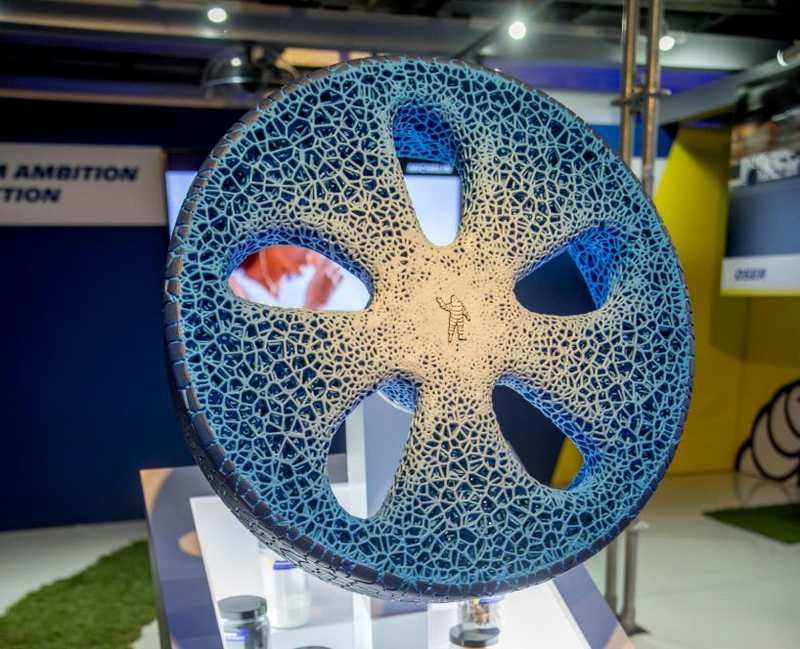 They explained that they used composite materials to manufacture Uptis, materials that are fully compatible with additive manufacturing. Eric Viness, Michelin Group vice president of research and development, said: “The Uptis prototype demonstrates Michelin's ability to innovate both in high-tech materials and in its development approach in close collaboration with GM. This partnership further strengthens our innovation roadmap, based on our Vision concept.”
They explained that they used composite materials to manufacture Uptis, materials that are fully compatible with additive manufacturing. Eric Viness, Michelin Group vice president of research and development, said: “The Uptis prototype demonstrates Michelin's ability to innovate both in high-tech materials and in its development approach in close collaboration with GM. This partnership further strengthens our innovation roadmap, based on our Vision concept.”
This airless tire should significantly reduce the number of punctures, giving motorists some peace of mind as well as improving performance for all professional operations. Finally, the ultimate goal of Uptis is above all to conserve materials, reduce waste and promote more sustainable mobility. Michelin and General Motors will conduct the first tests on vehicles such as the Chevrolet Bolt EV in the United States later this year.
General Motors Managing Director Steve Kiefer concludes: “General Motors is excited about the opportunities offered by Uptis and working with Michelin on this revolutionary technology.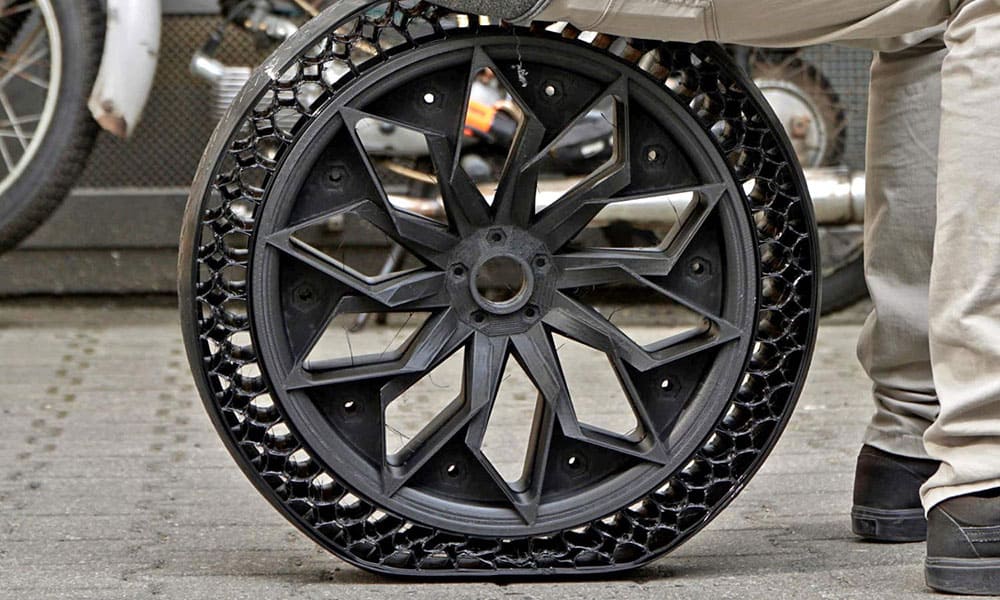 Uptis is the perfect solution to move the automotive industry into the future and perfectly illustrates how our customers benefit from the innovations developed together with our OEM partners.”
Uptis is the perfect solution to move the automotive industry into the future and perfectly illustrates how our customers benefit from the innovations developed together with our OEM partners.”
About us:
3DPrinter is the leader in sales of 3D printers, consumables and accessories in Ukraine. Our company also provides services for 3D printing .
Our store offers a wide range of 3D printers, 3D scanners, 3D plastics and resins, as well as spare parts for 3D printers and other accessories at the best prices on the Ukrainian market with delivery throughout Ukraine (Kharkiv, Nikolaev, Dnepropetrovsk, Lviv, Zaporozhye, Kherson, Odessa).
Michelin promises to 3D print wood car wheels
News
Everything returns to normal: Michelin has announced its intention to produce tires made of ... wood within two years. The new wheels will not only be more environmentally friendly, but also recoverable using 3D printers.
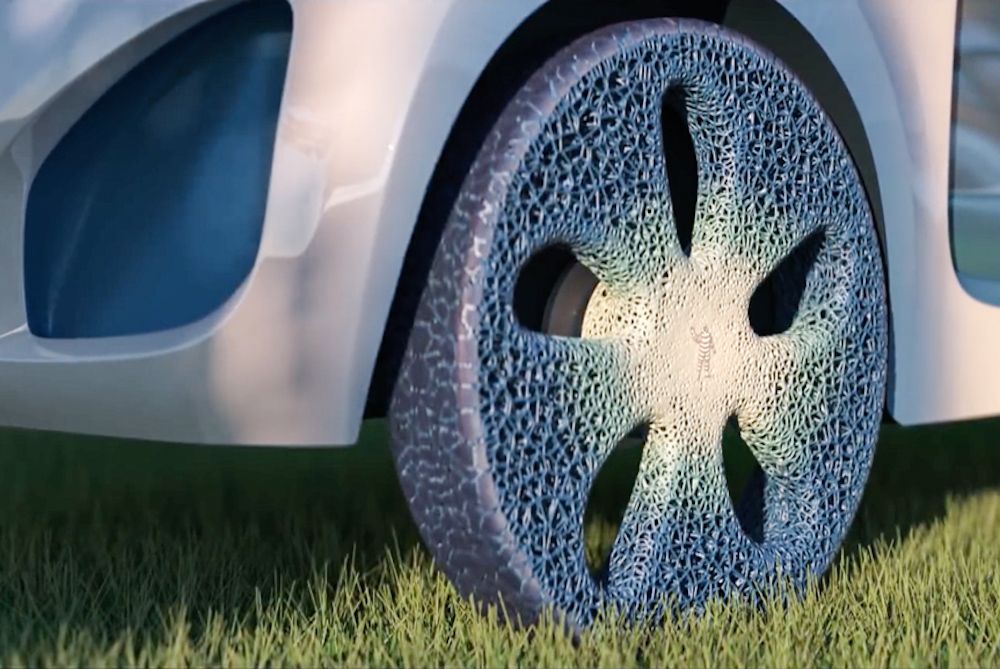 Let's talk about what they're up to.
Let's talk about what they're up to. As our regular readers will remember, last summer Michelin showed off the Vision airless concept tire. It was proposed to stuff new wheels with all kinds of sensors and make them from recycled materials. The life cycle of such wheels is theoretically equal to the life of the car. You won’t even need two sets of tires for winter and summer weather, because by the time of the change of seasons, worn out treads can be regrooved in the required form using a 3D printer.
As it turns out, it was not even a concept, but rather a real prototype. The French manufacturer really intends to get into the production of 3D printed wheels. What is most interesting, the main raw material will be wood, or rather elastomers based on it. Work on new production technology and materials is already in full swing. The raw material for the experiments comes from its own plantation in Brazil, where bananas and cocoa are grown next to rubber trees, and the company plans to methodically acquire new haciendas for the sake of increased environmental friendliness and independence from the oil market.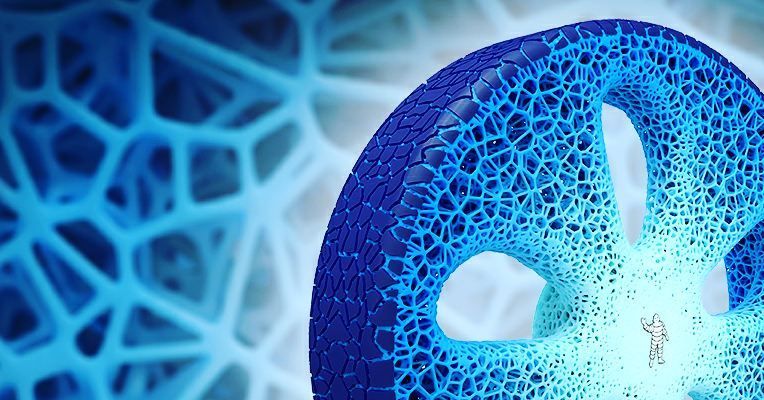
“This is not fantasy. The first industrial additive installation should be ready by 2020, and the industry will already dance from this stove. We are talking about major changes. In two years we hope to show the first wheels made of wood. Trees grow everywhere, and this is a renewable resource, so we can talk about the localization of production. Woodchip elastomers will replace petroleum products in tyres, which now account for 80%. We believe this is a good future-oriented solution,” says Cyril Roger, Michelin's Director of Science and Technology Relations.
Industrial group Fives, which last January signed an agreement with Michelin to produce 3D-printed tire molds, will help with the implementation of the new technology. The joint venture was named AddUp Solutions. As Roger explains, AddUp already has more than a million functional 3D printed metal products, so we are talking about full-fledged additive manufacturing, and not just prototyping. AddUp will assist in the development of rubber 3D printing technology, although the project is still at an early stage of development. Mass additive manufacturing of 3D printed wheels, according to Roger, is likely to unfold in ten to fifteen years, but rapidly developing additive technologies may well shift the graph to the left.
AddUp will assist in the development of rubber 3D printing technology, although the project is still at an early stage of development. Mass additive manufacturing of 3D printed wheels, according to Roger, is likely to unfold in ten to fifteen years, but rapidly developing additive technologies may well shift the graph to the left.
“At one time, the tire retreading business was killed by the Chinese, who saturated the market with cheap tires and made retreading services unprofitable. The main problem now, in my opinion, is to organize a network of service stations equipped with new technology. The technology will develop very quickly, so the question is rather whether we will be able to provide the necessary infrastructure in time,” Roger explains.
Do you have interesting news? Share your developments with us, and we will tell the whole world about them! We are waiting for your ideas at [email protected].
Follow author
Follow
Don't want
3
More interesting articles
13
Subscribe to the author
Subscribe
Don't want
Even the simplest FDM 3D printer can print color products with a smooth gradation of tones.